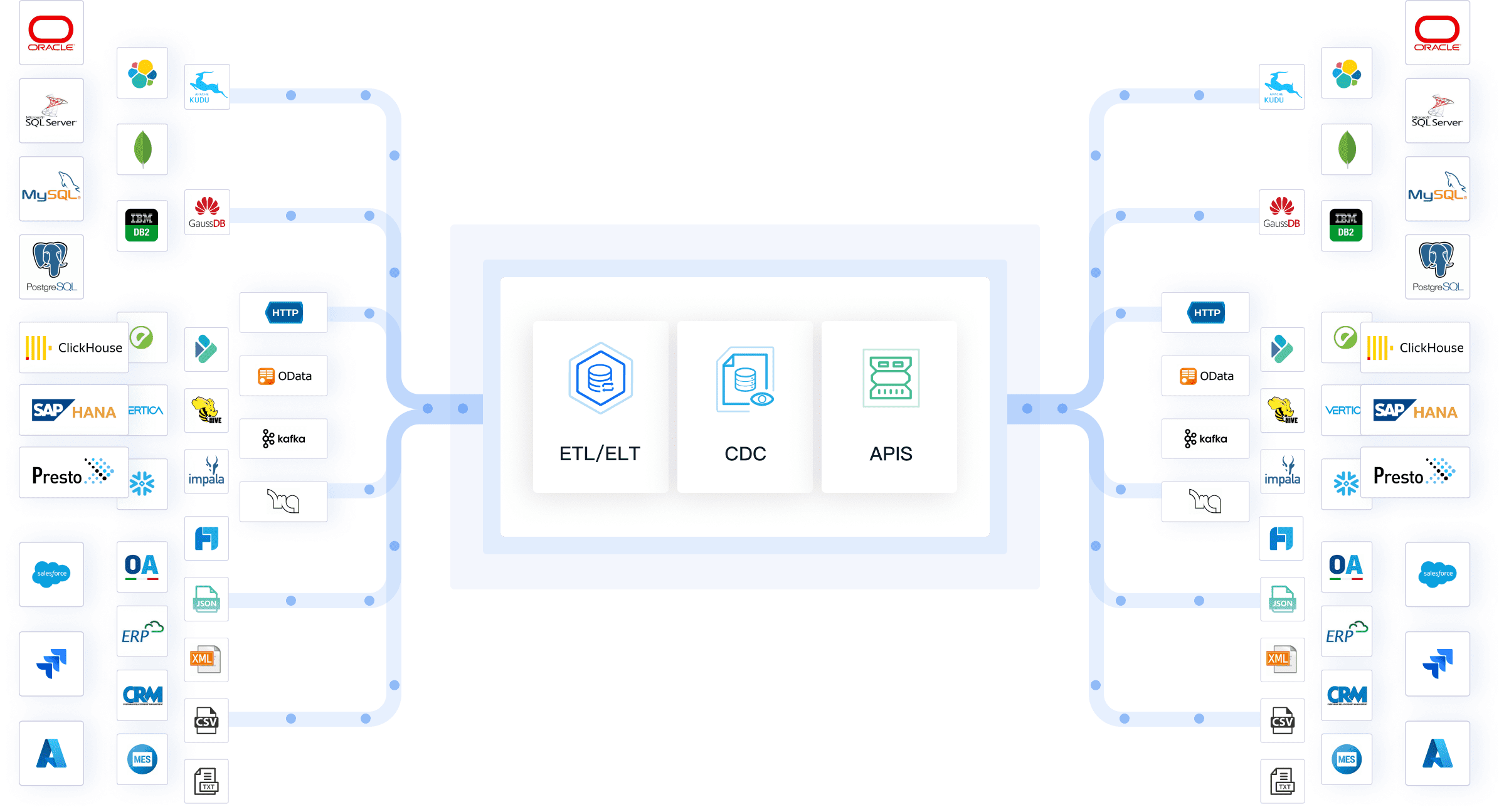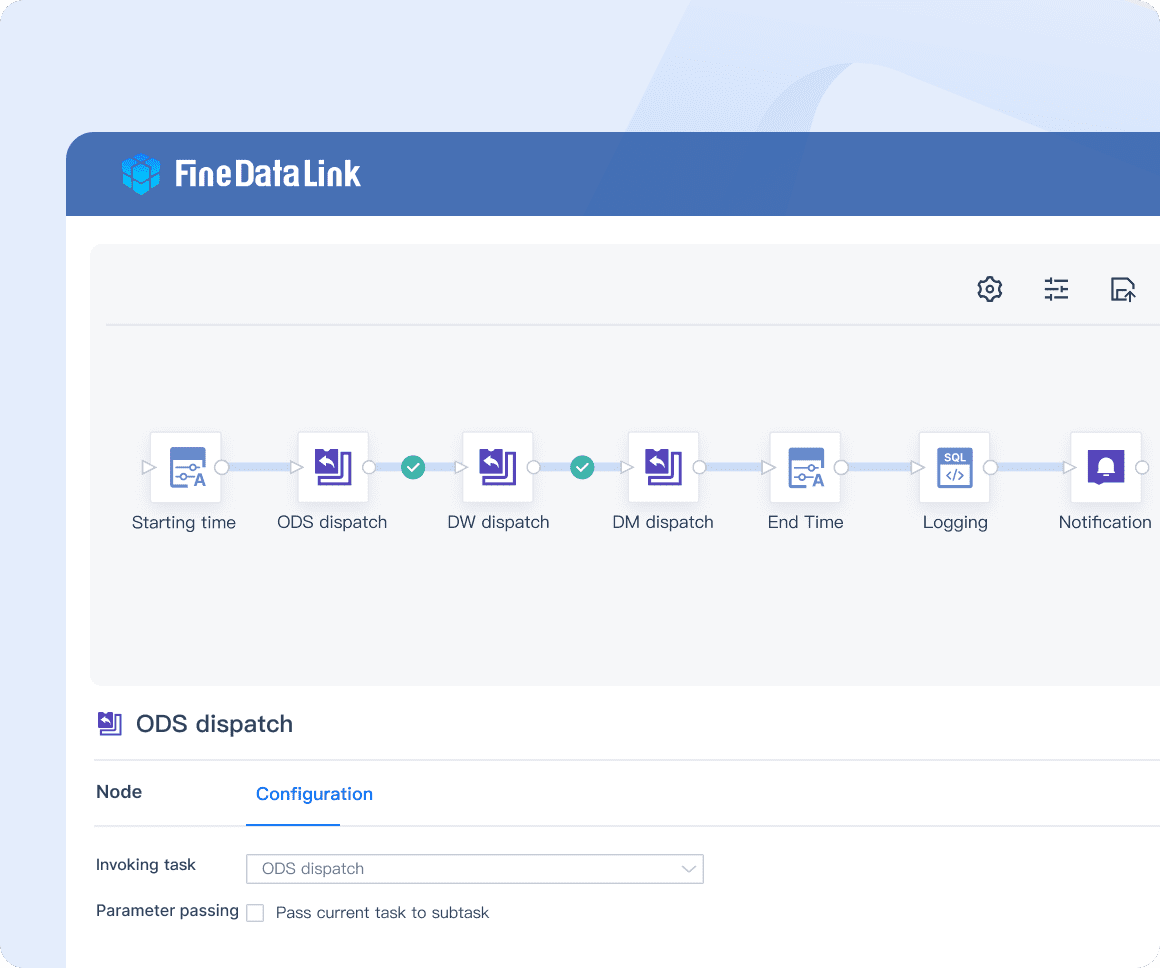Data management is the cornerstone of modern business operations, ensuring that organizations can effectively harness their data resources. In today's dynamic business landscape, the ability to collect, organize, and access data plays a pivotal role in driving productivity and informed decision-making. This blog will delve into the significance of data management, exploring key components and strategies essential for optimizing data utilization and governance.
Importance of Data Management
In the realm of modern business operations, data management stands as a crucial pillar that underpins the efficiency and effectiveness of organizational processes. By focusing on the systematic collection, organization, and access to data resources, businesses can unlock a myriad of benefits that propel them toward success. Let's explore how data management plays a pivotal role in enhancing productivity and supporting decision-making within an organization.

1. Informed Decision Making
- Access to Reliable Data: Effective data management ensures that decision-makers have access to accurate and up-to-date information, enabling informed decision-making.
- Data Quality Assurance: Proper data management processes, such as data cleansing and data validation, ensure that the data used for decision-making is reliable and trustworthy.
2. Regulatory Compliance
- Data Governance: Implementing robust data management practices helps organizations comply with data protection regulations such as GDPR, CCPA, and HIPAA.
- Privacy Protection: Proper data management ensures that sensitive data is handled and protected according to regulatory requirements, reducing the risk of data breaches and legal liabilities.
3. Operational Efficiency
- Streamlined Processes: Efficient data management streamlines business processes by providing easy access to relevant data and reducing manual data handling tasks.
- Resource Optimization: Effective data management optimizes the use of resources, including storage, processing power, and human capital, leading to cost savings and improved productivity.
4. Business Intelligence and Analytics
- Data Accessibility: Well-managed data is easily accessible for analysis, enabling organizations to derive actionable insights and drive strategic decision-making.
- Data Integration: Proper data management facilitates data integration, allowing organizations to combine data from multiple sources for comprehensive analytics and reporting.
5. Customer Experience
- Personalization: Effective data management enables organizations to gather, store, and analyze customer data to personalize products, services, and marketing campaigns.
- Customer Insights: By analyzing customer data, organizations gain valuable insights into customer behavior and preferences, allowing them to improve customer experiences and satisfaction.
6. Risk Management
- Data Security: Proper data management includes measures to protect data from unauthorized access, ensuring data security and minimizing the risk of data breaches.
- Disaster Recovery: Data management practices such as data backup and recovery help organizations mitigate the risk of data loss due to system failures, cyberattacks, or natural disasters.
7. Innovation and Growth
- Data-driven Innovation: Effective data management lays the foundation for data-driven innovation, enabling organizations to develop new products, services, and business models.
- Scalability: Well-managed data infrastructure can scale to accommodate growing data volumes and support organizational growth and expansion.
In summary, effective data management is essential for organizations to leverage the full potential of their data assets, drive informed decision-making, ensure regulatory compliance, enhance operational efficiency, and foster innovation and growth. It provides the foundation for successful business operations in today's data-driven world.
Key Components of Data Management
When it comes to data management, the process encompasses various key components that are essential for ensuring the effective handling and utilization of data resources within an organization. Understanding these components is crucial for establishing a robust data management framework that supports productivity, decision-making, and overall operational efficiency.
Data Collection
Methods and Tools
Organizations rely on a diverse set of data collection methods and tools to gather information from multiple sources. These methods include surveys, interviews, observations, and data mining techniques. By utilizing advanced data management tools, such as data integration software and cloud-based platforms, businesses can streamline the collection process and ensure data accuracy.
Data Management Tools: FanRuan’s FineDataLink provides an integrated solution for organizing, storing, retrieving, and manipulating data across diverse formats. This platform ensures data is handled with precision, security, and efficiency throughout its lifecycle. FineDataLink streamlines complex data management processes, enabling organizations to uphold high standards of data accuracy and integrity, making it an indispensable asset for data-driven enterprises.

Transform your data integration experience! Click the banner below to try FineDataLink for free and see how seamless data management can be.
Best Practices
Implementing best practices in data collection is vital for maintaining the quality and relevance of collected data. Establishing clear guidelines for data acquisition, ensuring data integrity through validation procedures, and regularly updating collection protocols are some of the best practices organizations should follow.
Data Management Techniques: Data management techniques include data preparation, data pipelines, ETLs (extract, transform, load), data catalogs, and more. These techniques help in collecting, organizing, protecting, and storing an organization’s data for analysis and decision-making.
By adhering to industry standards and compliance regulations during the collection process, businesses can mitigate risks associated with inaccurate or incomplete data sets.
Data Organization
Structuring Data
Properly structuring data is fundamental to effective data organization. This involves categorizing information into relevant fields or categories based on predefined criteria. Creating a logical framework for storing structured data enables quick retrieval and analysis when needed.
Utilizing relational databases or cloud-based storage solutions facilitates the efficient structuring of large datasets while ensuring scalability and accessibility across different departments.
Data Models
Developing comprehensive data models is essential for visualizing relationships between different datasets within an organization. By creating entity-relationship diagrams or using a data integration platform like FineDataLink, businesses can design robust frameworks that depict how various pieces of information interconnect.

Database Administration: Database administration involves managing databases that hold corporate data. It includes organizing data for access updates & management. Databases are used in transaction processing systems/ warehouses for BI tools and analytics purposes.
Data Access
Accessibility
Ensuring seamless access to critical information is a cornerstone of effective data access strategies. By implementing user-friendly interfaces and secure authentication protocols, organizations can empower employees at all levels to retrieve necessary insights promptly.
Data Analytics Tools: Data analytics tools like FineBI help transform raw data into meaningful information, uncover patterns and trends, assist in understanding complex datasets, and are used alongside data visualization tools to identify opportunities and solve business problems.
FineBI is a self-service bi and analytics software designed to facilitate independent and effective data exploration. It provides flexible tools tailored to IT professionals and analysts, along with an intuitive interface for business users. Collaboration features streamline teamwork, fostering business and digital innovation.
FineBI prioritizes meeting business needs by emphasizing problem-oriented exploration and dashboard generation. Its data analysis system comprises six core components tailored to address both enterprise and user-specific analytical requirements. FineBI enables business users and data analysts to connect, analyze, and share data across the organization for informed decision-making. Users can transform raw data into insightful visualizations, perform KPI tracking, identify trends, and predict future outcomes.
Key features include efficient exploratory data analysis, quick data alerts, collaborative editing, and robust data access controls. It empowers users to fully understand and leverage their data, facilitating timely decision-making and unlocking the potential of big data through diverse visualizations and in-depth analysis.
Organizations should also consider implementing role-based access controls to restrict sensitive information only to authorized personnel while promoting collaboration across teams.
User Permissions
Managing user permissions effectively is paramount in safeguarding confidential company information while facilitating collaborative efforts among team members.
By defining clear user roles and assigning appropriate permissions based on job responsibilities organizations can prevent unauthorized access to sensitive datasets and maintain confidentiality and integrity across all levels.
Database Administration: Database administration involves managing databases hold corporate includes organizing updates Databases used for transaction processing systems warehouses for BI analytics purposes.
Strategies for Effective Data Management
In the realm of data management, developing a data management strategy is paramount to ensuring that organizations can effectively leverage their data assets. By setting clear objectives and aligning them with business goals, companies can establish a roadmap that guides their data-related activities towards achieving desired outcomes.
Developing a Data Management Strategy
Setting Objectives
When embarking on the journey of creating a data management strategy, organizations must first define specific objectives that outline what they aim to accomplish through their data initiatives. These objectives serve as guiding principles that direct decision-making processes and resource allocations towards maximizing the value derived from data resources.
Organizations benefit from setting measurable objectives that allow them to track progress and evaluate the success of their data management efforts over time.
By establishing clear goals related to data quality, accessibility, and utilization, businesses can ensure alignment between their strategic vision and operational activities.
Aligning with Business Goals
A critical aspect of effective data management strategy development is aligning these initiatives with broader business goals and objectives. By integrating data-related priorities with organizational strategies, companies can ensure that their data practices directly contribute to overall success and growth.
Aligning data management strategies with business goals enables seamless integration of data-driven decision-making processes into daily operations.
By fostering synergy between data initiatives and strategic imperatives, organizations can enhance agility, responsiveness, and competitiveness in today's dynamic marketplace.
Implementing Data Governance
Standards and Policies
Data governance plays a pivotal role in ensuring the integrity, security, and compliance of organizational data assets. Establishing robust standards and policies for data management helps mitigate risks associated with inaccuracies, unauthorized access, or regulatory non-compliance. Adhering to industry best practices and regulatory requirements ensures that organizations maintain high standards of data quality, privacy, and security. Implementing clear guidelines for data handling, storage, sharing, and retention promotes transparency and accountability across all levels of the organization.
Compliance
Compliance with legal regulations and industry standards is a fundamental aspect of effective data governance practices. By staying abreast of evolving compliance requirements related to data protection, privacy laws, or industry-specific mandates, organizations can safeguard themselves against potential liabilities or reputational damage. Regular audits, assessments, and monitoring mechanisms help organizations demonstrate adherence to compliance frameworks while identifying areas for improvement. Ensuring ongoing compliance not only mitigates risks but also instills trust among stakeholders regarding how organizations handle sensitive information responsibly.
Leveraging Technology
AI and Automation
Incorporating advanced technologies like artificial intelligence (AI) and automation tools into data management practices can significantly enhance operational efficiency, decision-making capabilities, and overall productivity within an organization. By automating repetitive tasks, identifying patterns in large datasets, and enabling real-time insights generation, businesses can streamline processes, reduce manual errors, and unlock new opportunities for innovation. AI-powered algorithms facilitate predictive analytics, anomaly detection, natural language processing, enabling organizations to extract valuable insights from complex datasets efficiently.
Data Management Tools
Utilizing cutting-edge data management tools empowers organizations to optimize their data practices by streamlining workflows, enhancing collaboration, and ensuring scalability across diverse datasets. From cloud-based platforms to integrated software solutions, these tools offer functionalities such as data integration, data visualization, and reporting capabilities that enable businesses to make informed decisions based on accurate, up-to-date information. Investing in user-friendly interfaces secure authentication protocols role-based access controls ensures that employees at all levels have seamless access to relevant information while maintaining stringent security measures around sensitive datasets.
Future Trends in Data Management
Generative AI
Artificial intelligence (AI) continues to revolutionize the landscape of data management, with generative AI emerging as a transformative force. By leveraging generative AI technologies, organizations can unlock the potential of unstructured data, paving the way for enhanced insights and decision-making capabilities. The application of generative AI algorithms facilitates the transformation of raw data into actionable information, enabling businesses to extract valuable patterns and trends that drive strategic initiatives forward.

Transforming Unstructured Data
Generative AI plays a pivotal role in transforming unstructured data into structured formats, enhancing its usability and relevance within organizational contexts. Through advanced machine learning models and neural networks, generative AI algorithms can analyze vast amounts of unstructured data, such as text documents or images, and convert them into organized datasets. This transformation enables businesses to derive meaningful insights from previously untapped sources, fostering innovation and competitive advantage.
Enhancing Insights
The integration of generative AI into data management practices enhances the quality and depth of insights derived from complex datasets. By generating synthetic data samples based on existing information patterns, organizations can gain a comprehensive understanding of market trends, customer behaviors, and operational dynamics. These enhanced insights empower decision-makers to make informed choices backed by robust data analysis, driving efficiency and strategic growth across all business functions.
AI-native Data Fabric
The evolution of data management is further propelled by the emergence of AI-native data fabric solutions that automate the creation of data products. By harnessing the power of AI technologies within their data ecosystems, organizations can streamline processes, improve scalability, and enhance overall operational efficiency. The implementation of AI-native data fabric not only accelerates data processing tasks but also enables real-time decision-making based on dynamic insights generated from diverse datasets.
Automating Data Products
AI-native data fabric solutions enable organizations to automate the development and deployment of innovative data products tailored to specific business needs. Through intelligent algorithms that analyze historical trends and predictive patterns, these solutions generate actionable recommendations for optimizing operations or enhancing customer experiences. By automating the creation of personalized data products, businesses can drive value creation and competitive differentiation in rapidly evolving markets.
Future Potential
As organizations continue to embrace AI-native technologies in their data management strategies, the future potential for innovation and growth remains boundless. The convergence of artificial intelligence with traditional data management practices opens new avenues for exploring untapped opportunities and addressing complex challenges in today's digital landscape. By harnessing the capabilities of AI-native data fabric solutions, businesses can unlock unprecedented levels of agility, adaptability, and foresight in navigating an increasingly interconnected global marketplace.
Data management is the cornerstone of data-driven organizations, ensuring trust in data for informed decision-making. Effective data management involves collecting, organizing, and protecting vast quantities of data to drive business operations and strategic initiatives. Emphasizing the importance of robust strategies is crucial for optimizing data utilization and governance. Looking ahead, integrating advanced technologies like AI-native data fabric will revolutionize how organizations automate data products, enhancing operational efficiency and scalability. To stay competitive in the evolving digital landscape, businesses must prioritize effective data management practices and embrace future trends proactively.
Therefore, for better data management, users need more professional data management tools. The aforementioned FineDataLink and FineBI are excellent choices. Utilize FineDataLink for database management and FineBI for data analysis, combining their strengths for end-to-end data management, safeguarding your enterprise's development journey.
Continue Reading about Data Management
Location Data Management: Key Techniques and Tools
Leading Firms Offering Data Management Jobs This Year

The Author
Howard
Data Management Engineer & Data Research Expert at FanRuan
Related Articles

Best Data Lake Vendors For Enterprise Needs
Compare top data lake vendors for enterprise needs. See which platforms offer the best scalability, integration, and security for your business.
Howard
Dec 07, 2025

Top Data Ingestion Platform Compared
Compare the top 7 data ingestion platforms, including real-time features, integration, scalability, and pricing to find the best fit for your business.
Howard
Dec 04, 2025

Best Data Lake Companies For Enterprise Needs
Compare top data lake companies for enterprise needs. See which platforms excel in scalability, integration, security, and analytics for businesses.
Howard
Dec 04, 2025





